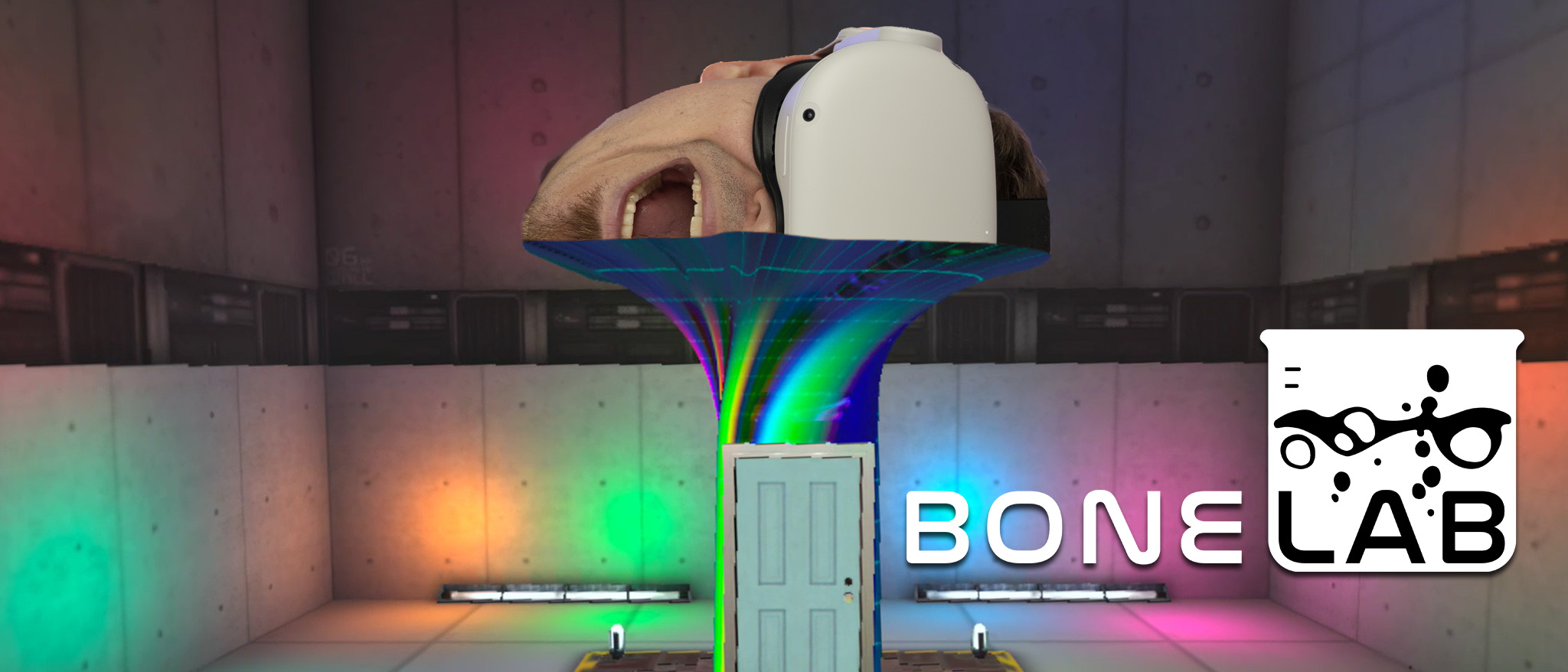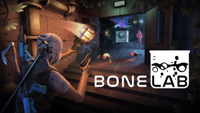Android Central Verdict
Bonelab is a near-perfect blend of sandbox and narrative gameplay that stretches the technical limits of the Quest 2. Its heavily physics-based gameplay is ground-breaking in many ways, offering ways for creative players to dispatch enemies like never before. Be warned, though, that this intense game isn't for the faint of heart or stomach and will make many people motion sick with its intense movements.
Pros
- +
Deep, varied gameplay with lots of activities
- +
Built-in mod support means endless replayability
- +
Gorgeous visuals
- +
Mind-blowing physics engine
- +
Intriguing plot and world
Cons
- -
Doesn't adhere to VR comfort standards
- -
Physics engine can be wonky
- -
Some of the game modes would be better with multiplayer
Why you can trust Android Central
In the world of VR, few games are as confident as Bonelab. As the successor to Boneworks, Bonelab has a lot to live up to, especially given that it is available on the Quest platform from day one. After all, how is it possible to not only replicate the intricate physics engine from the first game but also to improve upon it in meaningful ways?
Spoiler alert: developer Stress Level Zero did it. They accomplished what so many naysayers argued was impossible and not only ported Boneworks' impressive Marrow 1 physics and interaction engine to the Oculus Quest 2, but they've made the experience better in the process. In many ways, it feels like the same wizardry it took to bring Blade & Sorcery: Nomad to the platform, but with even better native modding support and far more content.
But Bonelab isn't a game for everyone, and it all boils down to that impressive physics engine. Most VR games adhere to a general industry standard for comfort so as to appeal to the widest audience of gamers. Bonelab throws all that out the window — just like its predecessor — in order to achieve the crown of being the defining physics-based VR game.
Your virtual body will be thrown across rooms and treated more like a character would be treated in a "pancake" game on a flat screen, and that's a recipe for disaster for many people's stomachs and brains. If you've got an iron stomach and VR legs to match, it's probably impossible to find a game that offers more freedom to do whatever you want. But, if you're like most people, Bonelab will almost certainly make you sick within minutes of playing. Still interested?
Bonelab: What is it?
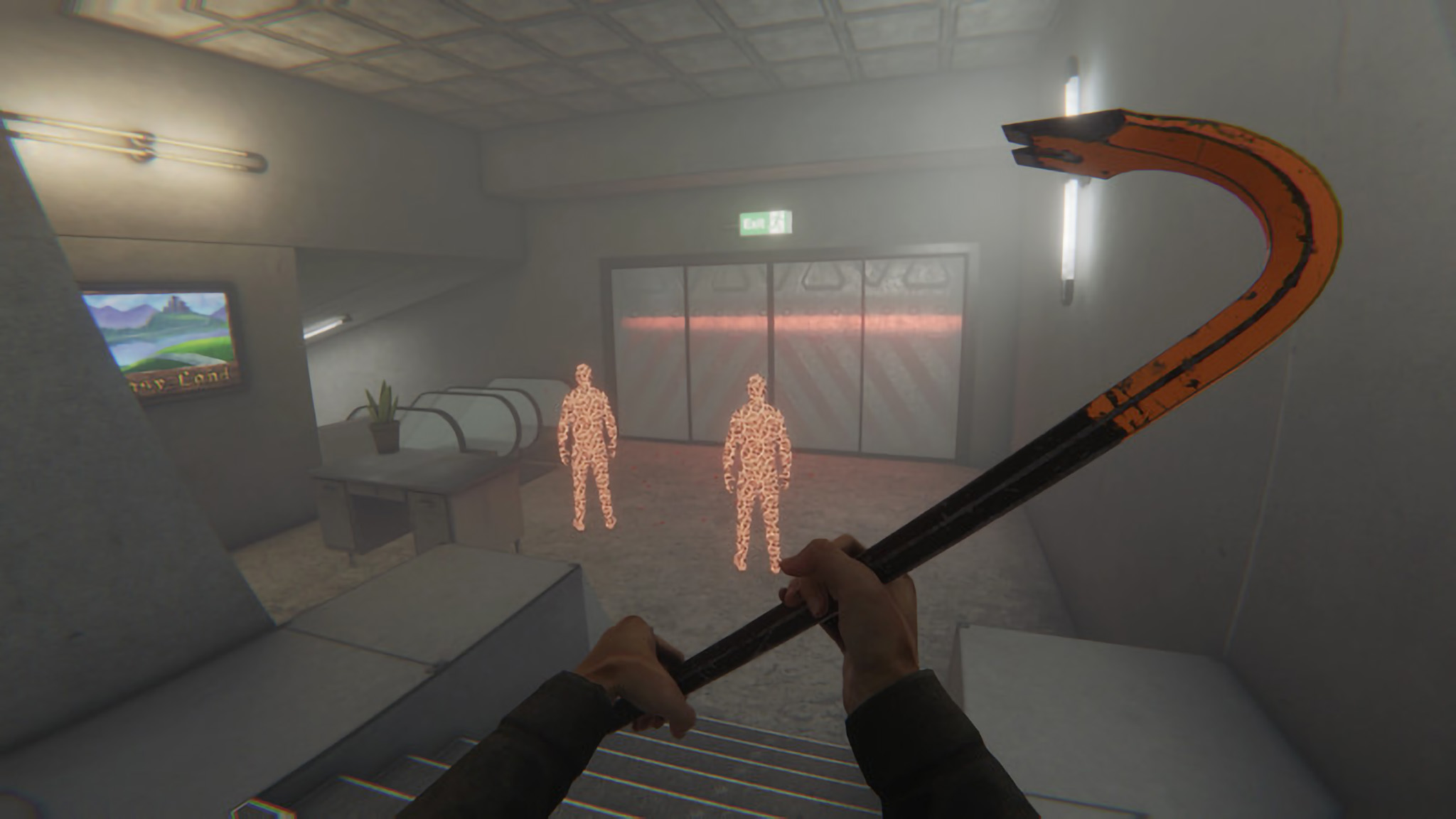
Bonelab is a first-person VR action game available on Quest and Steam platforms and describes itself as "an experimental physics action game" where nearly anything is possible. The original Boneworks title on PCVR drew a lot of attention originally for using visual assets similar to Half-Life — including enemies that look an awful like a head crab from the series and a crowbar as a weapon — but the similarities really stop there.
While Bonelab pulls a lot of inspiration from other art throughout the game — there are several scenes that feel ripped straight from fan-favorite action movies like The Matrix — the game ultimately thrives on delivering a unique experience by offering a ton of variety, both in levels and character abilities.
In Bonelab, you'll control one of many different avatars from a first-person perspective. Bonelab thrives on physics-based interaction throughout the game, including full-body simulation of your character. Throughout the game, you'll be using guns, melee weapons, and environmental objects to solve puzzles and attack enemies as you wind your way through the story and the game's large number of "side games."
But Bonelab isn't just a game that you play through and put on the virtual shelf when you're done. Throughout the game, you'll unlock additional abilities as you progress through the world — maybe a bit like a Metroidvania-style game — but you won't be going back through a large open world with these new abilities. Instead, players are encouraged to build their own scenarios or play one of (potentially) many user-created mods from the in-game mod browser.
Bonelab's complicated gameplay can be played when seated, even if that experience is a little bit awkward.
The game's controls are mostly intuitive and will be familiar to anyone who has played other VR shooters. You'll walk with the left stick and can click it in to toggle between run and walk. Players will virtually turn with the right stick and can also use the right stick to stand taller or crouch by pushing it up or down. This last part makes Bonelab's complicated gameplay possible when seated, even if that experience is a little bit awkward.
Players can use on-body inventory or press and hold B to pull up a virtual HUD of equipped weapons. For the most part, I found the on-body inventory system quite impressive and useful. However, I regularly had difficulty grabbing the weapon that was either on my hip or somewhere else lower than my chest, and I could never quite figure out where it went or how to find it.
Similarly, players can adjust the different proportions of the game's built-in avatars — that means ones not imported through the game's mod browser — including detailed proportions like underbust and leg length.
Slow motion can be activated at any time by tapping the X button on the left controller and will last a few seconds. Weapons and many items can be physically grabbed or "Force grabbed" from a distance, depending on what makes you most comfortable. This helps alleviate issues with geometry clipping and, again, makes it possible to play the game fully seated.
Bonelab: A special note on comfort
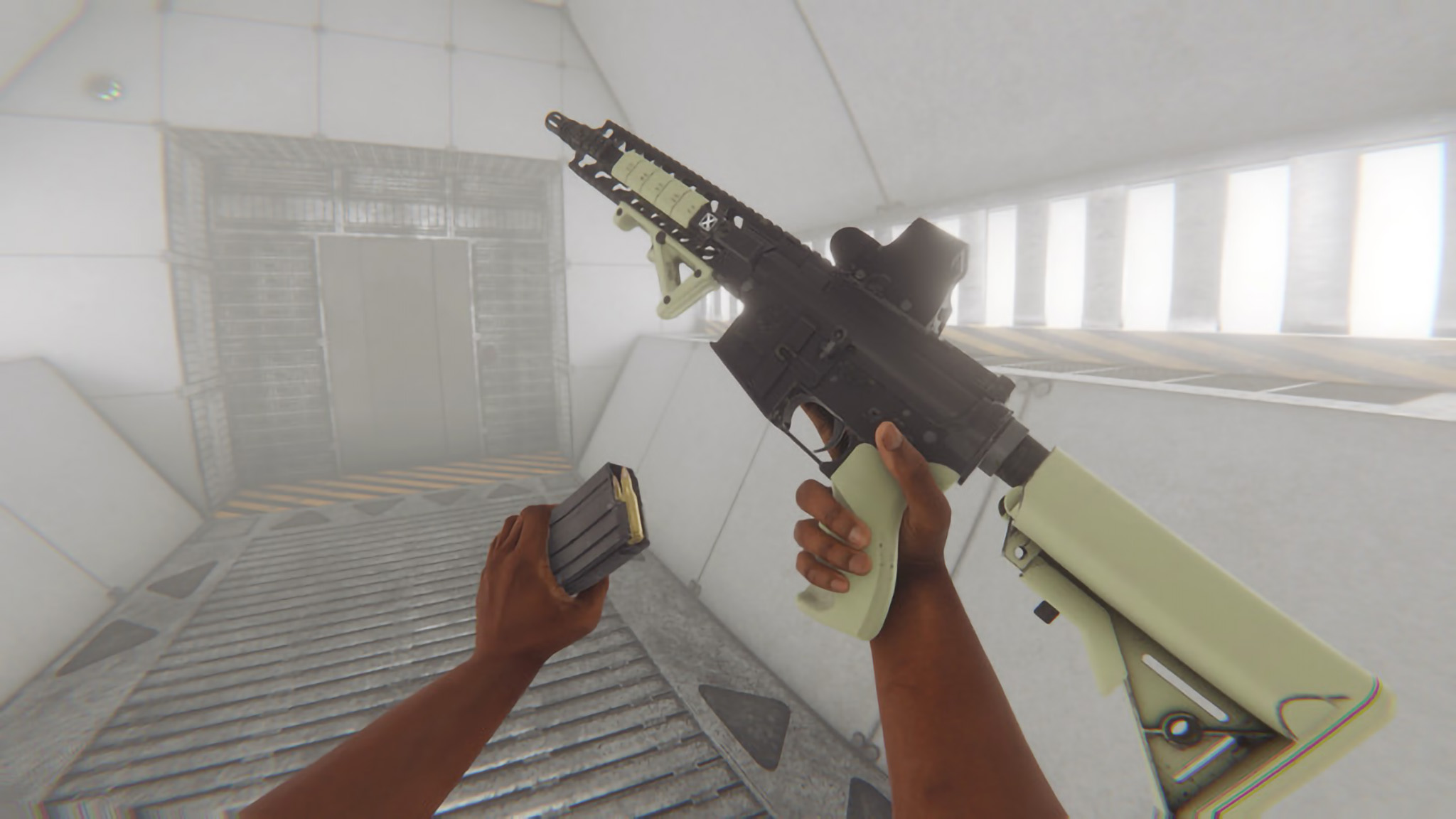
While most VR games at least try to stick to some semblance of a common ruleset to keep players comfortable, Bonelab throws most of those out the window. Your character's body will regularly be pushed, pulled, and tossed across the environment as you progress through the game, meaning this is a game that will only be playable for those of us with iron stomachs and VR legs of steel.
Case in point: the game begins in one of the most psychologically graphic ways possible, with you hanging yourself at a public execution. As you slice through your rope with a magic dagger that appears floating in the air, you fall down a pit and land unharmed in a mysterious underground chamber that begins the game's bizarre and unique narrative.
While Bonelab offers a number of standard VR comfort options in its menu — things like height adjustment and several different virtual turning styles with the right joystick — the only form of locomotion is smooth locomotion. That's sometimes known as sliding locomotion, which uses the left stick to virtually slide your character along surfaces. Since your whole body is simulated in the game, your character's legs will move somewhat realistically, giving the impression that you're actually walking.
Even if you're not too bothered by your virtual body getting tossed around higgledy-piggledy from time to time, it's entirely likely that the game's vehicle system will completely do you in.
This full-body simulation — and what's done with your character's body movements in the game — will most assuredly make many players sick. As someone who has played VR games for just shy of a decade now, I didn't experience any kind of sickness or headache while playing. I recognize I am absolutely in the minority here.
Even if you're not too bothered by your virtual body getting tossed around higgledy-piggledy from time to time, it's entirely likely that the game's vehicle system will completely do you in. Bonelab introduces players to vehicles via a classic theme park minecart ride — complete with a laser "gun" that you can shoot targets with — and it does nothing to ease players into this mechanic. Be warned. It's intense.
Bonelab: What I loved
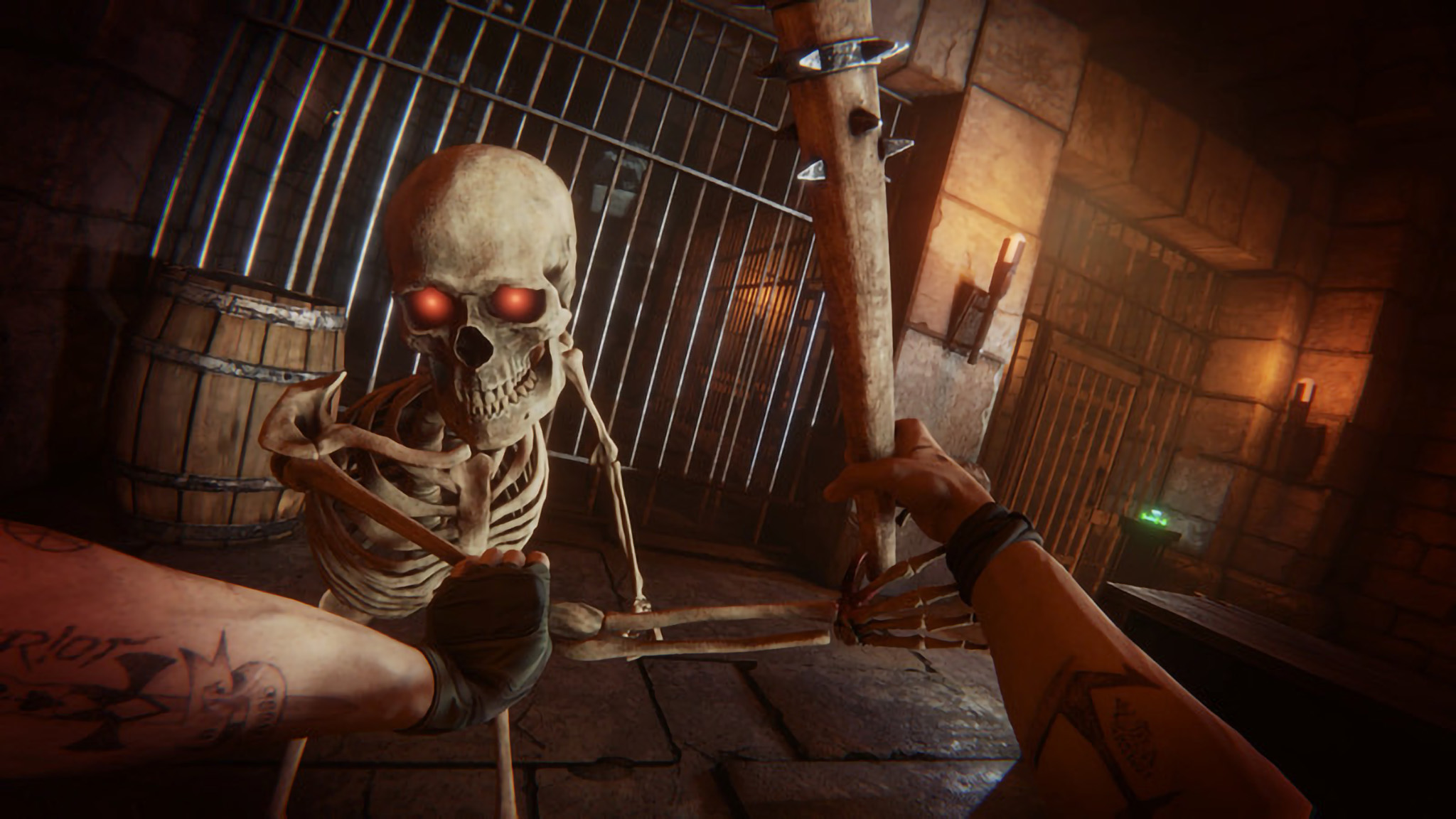
The feeling of euphoria you'll have when switching between characters on-the-fly is difficult to describe.
In many ways, Bonelab feels like the future of VR gaming. It fully simulates your character's body and gives players the ability to switch between a seemingly unlimited number of avatars thanks to the ability for players to import their own avatars, either on their own or through the game's mod browser.
But avatars aren't just visually different versions of yourself. They have their own powers, abilities, and physical sizes, the last part of which is probably what will have you really feeling like you're actually jumping into the shoes of a completely different person (or monster). While it'll take several hours to unlock, players can eventually store these avatars in an arm-mounted "string" that can be pulled to switch between avatars on the fly.
This particular mechanism is ground-breaking in so many ways, and the feeling of euphoria you'll have when switching between characters is difficult to describe. Need to scoot through a tiny vent to take out enemies stealthily? Jump in the shoes of the little fox avatar and scoot through without trouble.
Or maybe you're heading into an epic battle with enemies that have powerful guns? Hopping into the shoes of the armor-glad warrior will let you not only deflect bullets with ease but also to lift heavy objects — including giant garbage dumpsters — and toss them at your opponents. It's this physical sense of self-being that makes Bonelab's physics and interaction system so darn impressive and fun to play around with.
The built-in mod browser ensures that players will have seemingly unlimited gameplay so long as the community is around.
Bonelab's overall game structure is quite brilliant, too. Developer Stress Level Zero recognizes that there are a lot of mechanics in the game that will take time to get used to, so after going through a semi-brief prologue, players will be tossed into The Lab to further experiment with the game's mechanics. Six total areas encompass the major types of gameplay: gunplay, melee weapons, parkour, sandbox, experimentation, and modding.
Each of these areas is filled with different levels and sections to play through. One has you in a medieval arena facing skeletons and other abominations of nature, while one has you defending pipes from void zombies and even lets you use a special gun that builds planks to board up doors and windows.
Other areas see you knocking down giant bowling pins with gravity guns. Still, others have you running across rooftops escaping green void "agents" in a near-perfect replication of the opening scene of The Matrix.
Once you've explored enough of these areas, you'll unlock a crane puzzle that can be solved to move on to the next narrative portion of the game. But the only reason you now know this is because I told you. After all, the game won't give you much in the way of direction at any point in time. While that's both a blessing and a curse at times, it plays heavily to Bonelab's perceived audience of hardcore VR enthusiasts who enjoy playing around with physics in a way that's impossible in the real world.
Bonelab can make you feel incredibly badass once you get good at it. And make no mistake, there's a steep learning curve here.
As a result, Bonelab can make you feel incredibly badass once you get good at it. There's a steep learning curve to get over, for sure, but mastering the mechanics will unlock a sense of euphoria that few games ascribe to.
In a way, it's not unlike Blade & Sorcery's sandbox gameplay, and, in many scenarios, you'll undoubtedly feel like you're playing a reskinned version of Blade & Sorcery. But Bonelab's unbelievably diverse set of weapons, enemies, characters to play as, and puzzles to solve set it a level higher than Blade & Sorcery for me, a game which often makes me feel like I simply don't have enough imagination to truly enjoy.
And folks who love sandbox games will also feel right at home here. While there are several hours of narrative-driven gameplay that's uniquely interesting and beautiful, the game's real long-term strength lies in the sandbox gameplay. Again, as you progress through the game's story, you'll unlock more abilities and items, including a gun that can spawn any object anywhere. Yes, that even includes a go-kart.
Bonelab: What could use work
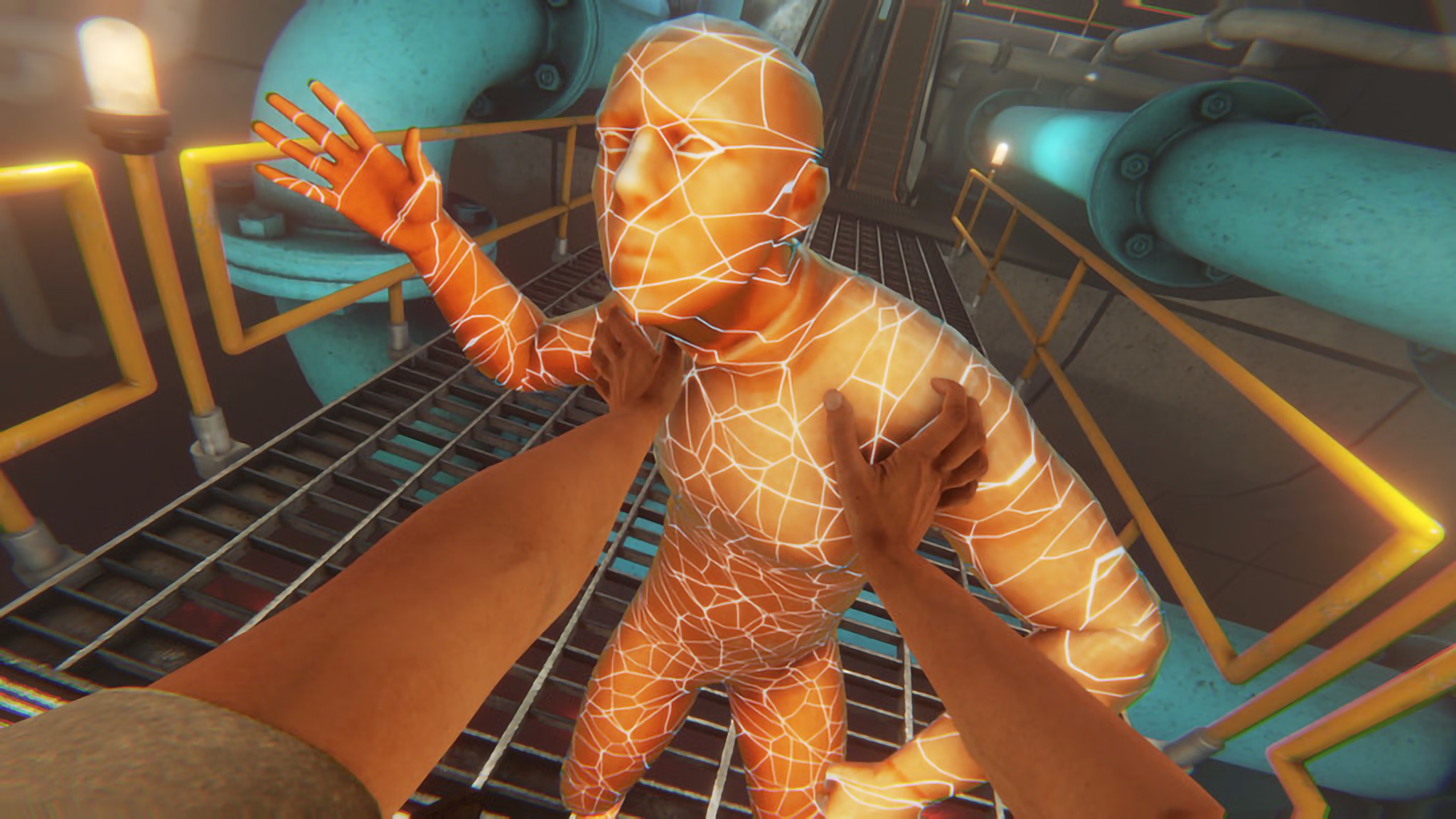
I can't tell you how many times my arm would get stuck in a wall or an object and result in my virtual body flailing around, even if just a little bit.
I've already detailed the comfort issues with this game in a separate section for a reason. While I don't want to beat a dead horse, it's extremely important to know that the comfort issues in the game will make it unplayable for many people. Thank heaven for the Oculus store's return policy, I'd say.
Part of the comfort issues aren't just because of the "mistreatment" of a player's virtual body — that means tossing your character around environments without your direct control — but because the physics engine isn't perfect. No other game's physics engine is perfect, either, but most other VR games don't purposefully toss player's bodies around like this one does, either.
I can't tell you how many times my arm would get stuck in a wall or an object and result in my virtual body flailing around, even if just a little bit. In addition to this movement likely making some people sick, it was incredibly frustrating.
Many of the game's parkour or climbing puzzles suffer from these physics issues and are less enjoyable as a result. It's one thing to try to make Mario jump across seemingly impossible-to-reach chasms and eventually making it after the hundredth attempt. It's another to have this same thing happen in Bonelab when you're just trying to climb somewhere or grab an object. The medieval-themed parkour level, in particular, was a real source of frustration for me.
Mostly, though, I found that pulling myself up onto objects was trickier than it should be. Games like Sport Mode and Blade & Sorcery do it better, and it's mainly because Bonelab gives you complete autonomy of your character's legs by pushing the right joystick up or down.
I found it best to pull my legs upward by pressing down on the right joystick — to virtually duck — and then pushing the legs upward after I pulled my body up onto a platform. I think, anyway. It's a lot of thought to put into a seemingly simple operation that I don't have any issue with within the aforementioned games.
Bonelab: Should you buy it?
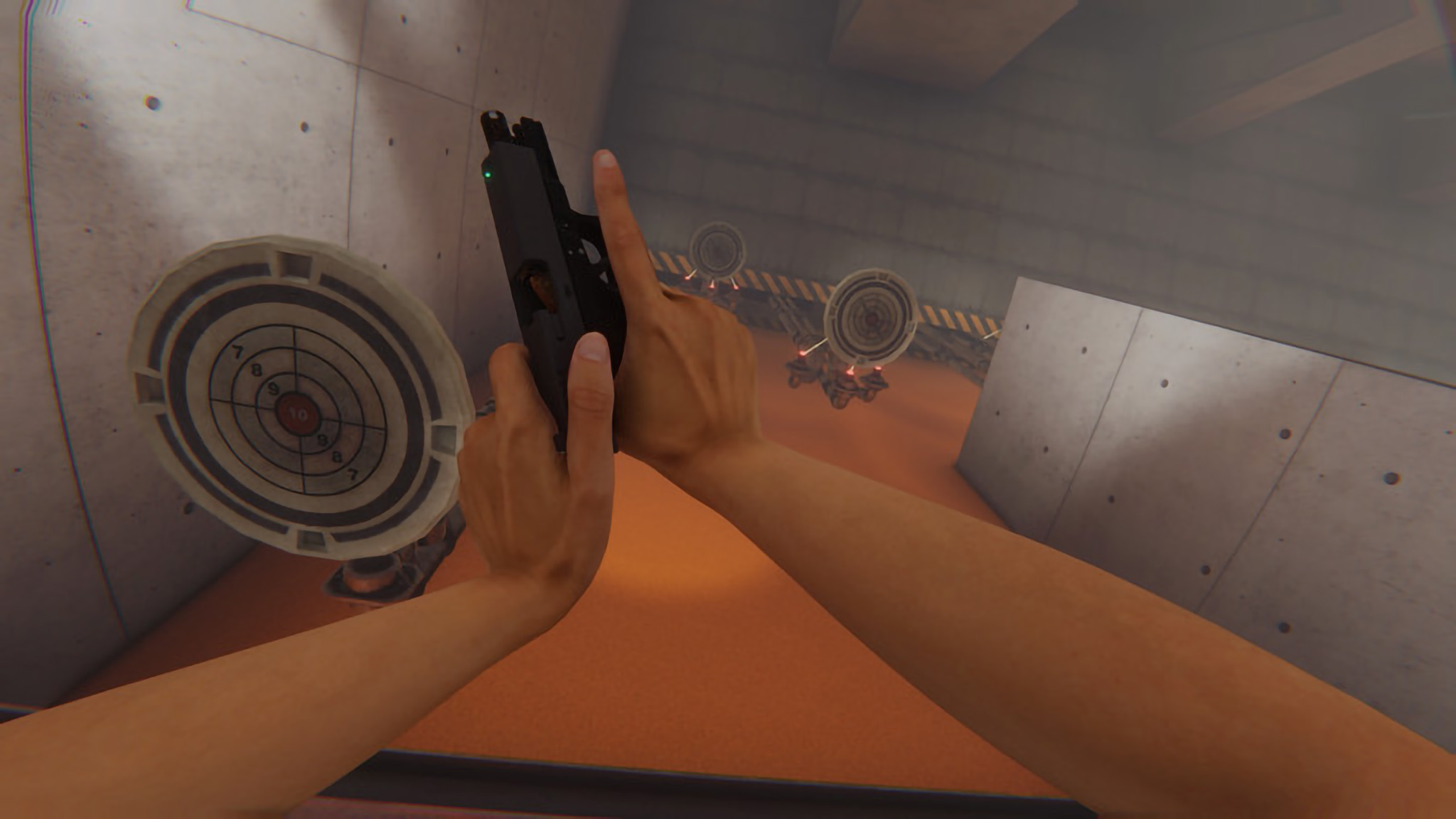
Bonelab is yet another miraculous port to the Quest 2 that many thought to be impossible. It builds upon the narrative of the original game and offers an incredible wealth of gameplay mechanics that feels like it pulls a little bit of everything from the best Quest 2 games.
Comfort issues aside, there are few games that will offer this level of interactivity and replayability outside of a literal world-building title like Minecraft. That in-game mod browser, in particular, is sure to fill up with a treasure trove of options, as has been proven by other games that do it, like Contractors with its Star Wars mods.
Want to experience the craziest, most imaginative physics-based gameplay you'll find in VR right now? That's Bonelab, in a nutshell, and it offers something for everyone with an impressive combination of both sandbox and narrative-driven gameplay, plenty of action, and lots of puzzles to solve. Now, it's time for me to jump back in the lab and see what else I can find.

